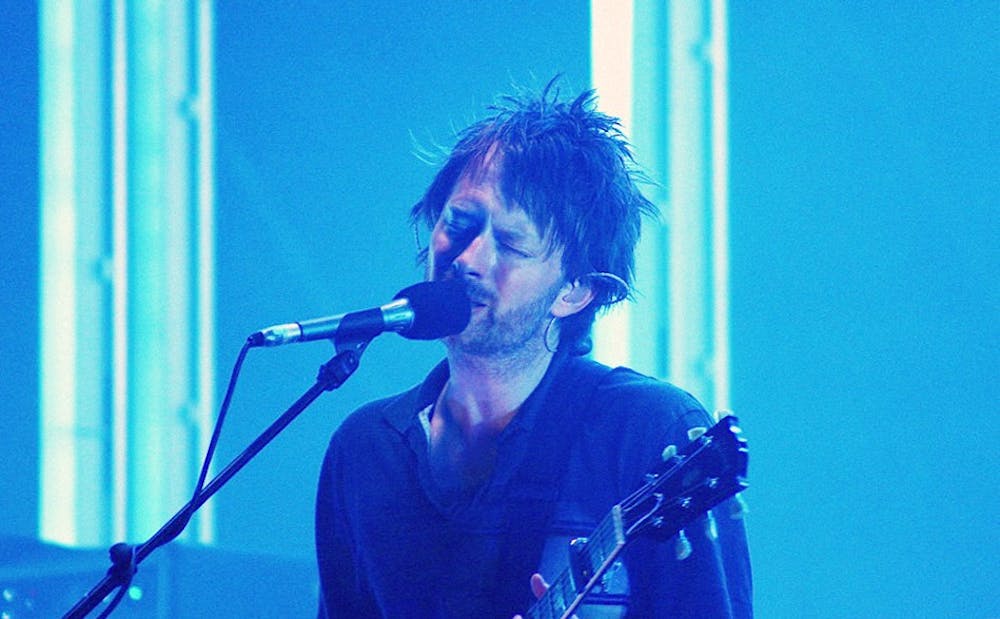Thom Yorke has always had a curious relationship with his past. Never one to repeat himself, the Radiohead frontman makes a sharp left turn in technique and instrumentation with almost every release. This habit was born out of a fear of stagnation, but over the past 25 years its source has evolved from anxiety to a spirit of experimentation.
What’s most shocking about “Anima,” Thom Yorke’s third solo album, is that it really doesn’t try anything new. Instead of using learned skills to tread new waters, for the first time ever it feels like Yorke is looking backwards for the experiments he didn’t quite get right the first time in order to patch up those holes. The result is the most cohesive and satisfying record of his solo career.
We see this distinction right off the bat with the opener “Traffic.” Yorke is famous for front-loading experimentation, opening his albums with a tone-setting track that immediately sounds unlike anything else he’s ever done. “Traffic,” however, sounds instantly familiar as it hearkens back to “Tomorrow’s Modern Boxes” opener “A Brain in a Bottle” in tone and instrumentation. The difference between the two tracks, and ultimately the two albums, is Radiohead “sixth member” Nigel Godrich’s production. While “Tomorrow’s Modern Boxes” offered a cold and sparse take on IDM, “Anima” completely fills the sonic warehouse of space it occupies with the sounds of a futuristic industrial revolution.
A tidal wave of strings and piano washes over the jittery electronics of “Twist.” A cacophony of circuitry overwhelms the cavernous soundscape of “Not The News.” Undulating synths brood over the haunting drum machine of “The Axe.” And all throughout, Yorke chops up and layers his vocals, placing them as far away as an echo in the background and as close as an intimate whisper to create a deep sense of anxiety.
This massive step forward is largely a result of the method by which the album was conceived and recorded. Yorke and Godrichl have been performing most of these songs live for a few years now as part of their experimental “Tomorrow’s Modern Boxes” tour. After 40 shows of tweaking and improvising on the tracks, the duo recorded the LP in just a few months, nearly replicating the setup of the live shows to do so. Such a combination of organic production with inorganic sounds is what allows “Anima” to fill a room with its eccentric energy.
Even with such a new atmosphere, the record’s use of familiar instrumentation gives the sense that “Anima” was born out of Yorke’s reflection on the strengths and weaknesses of his earlier work, particularly “Tomorrow’s Modern Boxes” and Atoms For Peace’s “Amok.” The synths dancing over “The Axe” are straight out of “Amok”’s title track, which also lends its drum machine beat to “Not The News.” The dreamier synths on “Last I Heard (...He Was Circling the Drain)” are a direct callback to the trance-inducing “Interference.” Album highlight “Dawn Chorus” borrows its stuttering beauty from “The King of Limbs” track “Codex” as Yorke’s intimate muttering recalls 2016’s “Glass Eyes.” There’s even a “15 Step” sample on “Twist.” Yorke has never sounded more interested in his past, and the resulting product is extremely satisfying.
And then, of course, it wouldn’t be a Thom Yorke record without political and technological paranoia and a mysterious ad campaign. We even got a stunning short film from long-time collaborator Paul Thomas Anderson. Over 25 years after his debut with Radiohead, Thom Yorke is continuing to push himself creatively, and with a refreshingly reflective approach he’s finally delivered the defining album of his solo career.
Get The Chronicle straight to your inbox
Sign up for our weekly newsletter. Cancel at any time.

